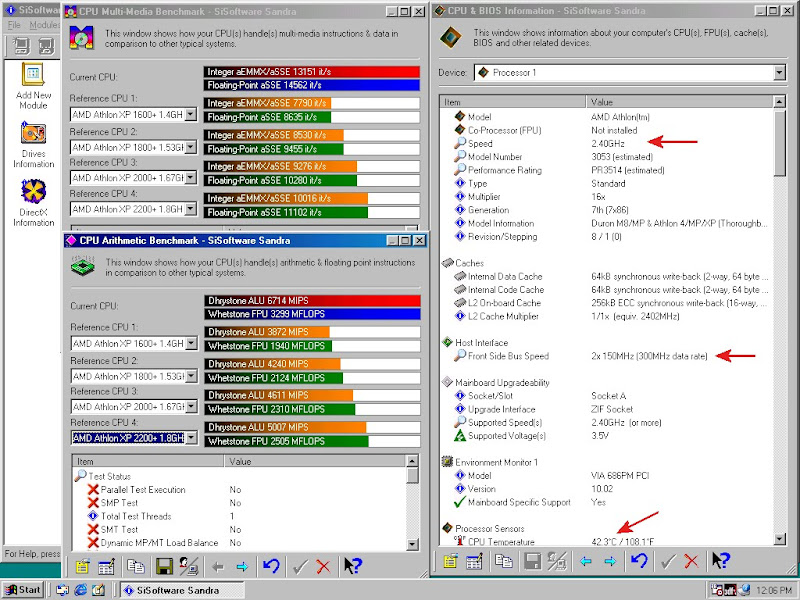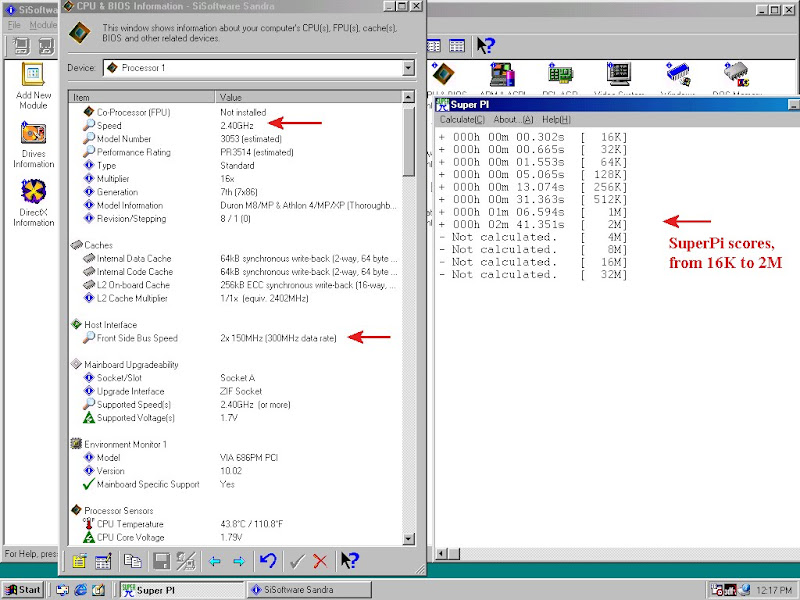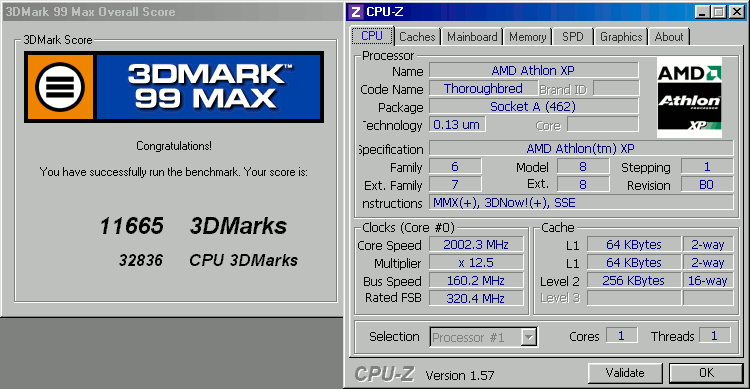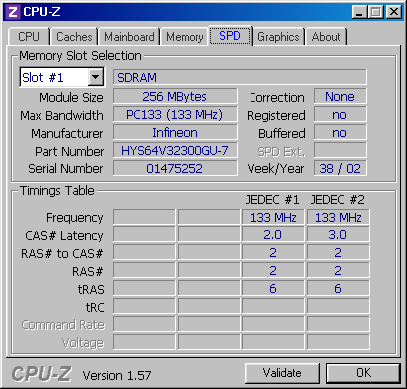First post, by retro games 100
- Rank
- l33t
I read on the net that the Athlon XP T-Bred 2600+ can be overclocked using an FSB of ~145. With that in mind, I set my crazy caps of death Epox "thrill ride" EP-8KTA3+Pro board to 150, and here are the results:
SiSoft Sandra 2002 Pro

Sandra again, with SuperPi

SpeedSys, in pure DOS

I've just thown this rig together without any attention to detail. I haven't done anything to the BIOS, in order to tweak its timings, and the RAM is just one stick of "no name" CL3 stuff. However, for the BIOS voltage settings, I increased the CPU voltage from its default setting of 1.65 to 1.775. For the other two voltage settings, IO and AGP, I increased them by "one notch" each. I'm not sure if that was necessary.
I ran ChkCPU.exe in pure DOS, and it appears as a .TXT attachment below. An FSB of 150 makes this 2.13 GHz CPU operate at a real clock speed of 2.4 GHz. 3DMark 99 Max gives me a CPU Marks score of 33981, which is good. The 3D score was only 6022 but that's just because the VGA card being used at the moment is a Voodoo3 2000. It's comfortably reached its maximum performance, and can't offer up anything faster with this T-Bred. I might replace it with someone a lot better, and run some of the other 3DMark benchies, such as 2000 and 2001.
The good thing about using a T-Bred as opposed to an XP-M CPU on this particular 1 ISA slot board, is that this 2.4 GHz real clock speed can be used in pure DOS. That's if you want to! Quake 1.06 shareware timedemo demo1 on full screen and using its default settings completes in 3.5 seconds, and scores 277.6 FPS. Doom 1.9 shareware timedemo demo3 on full screen scores 2134/532.




